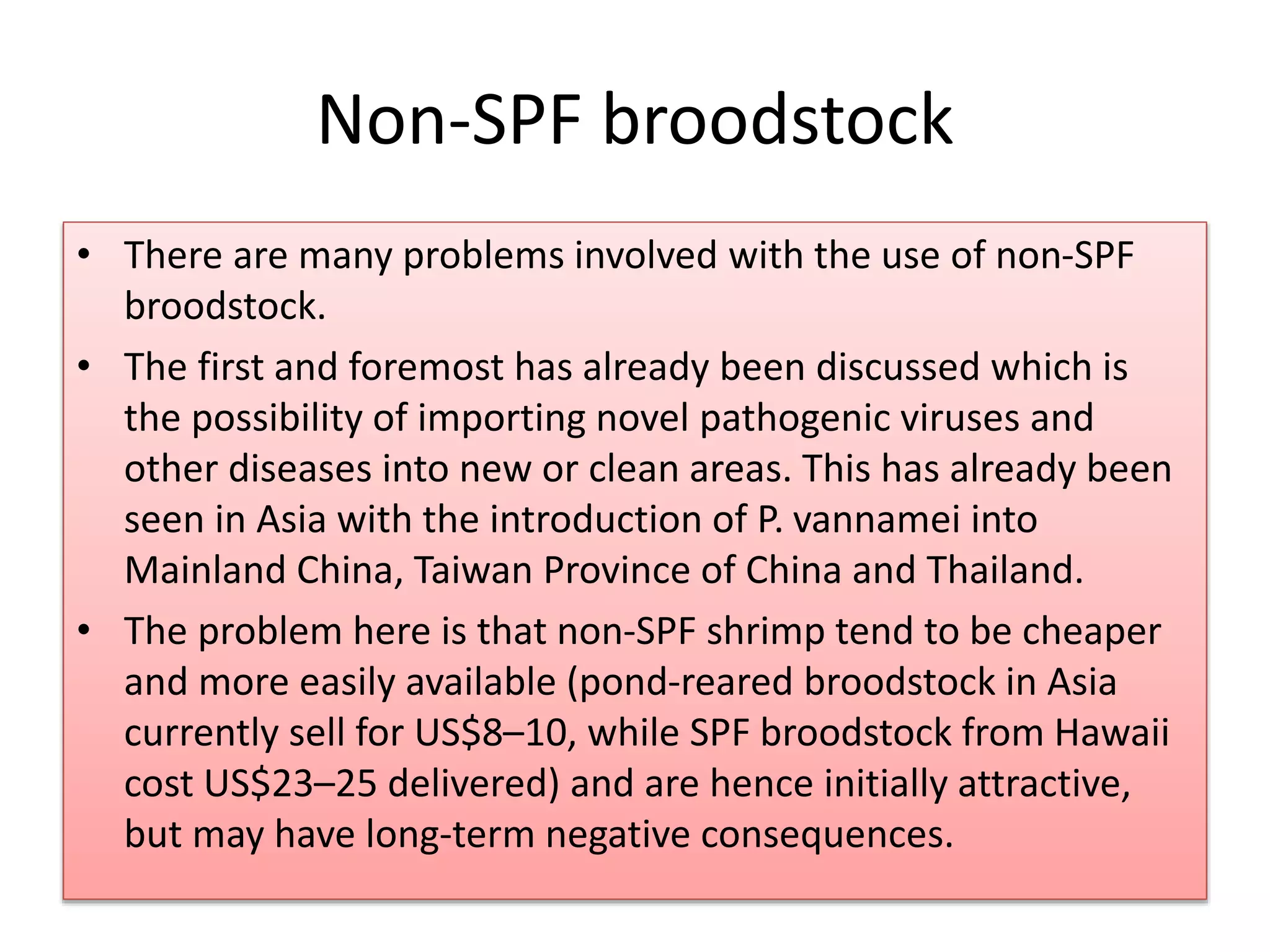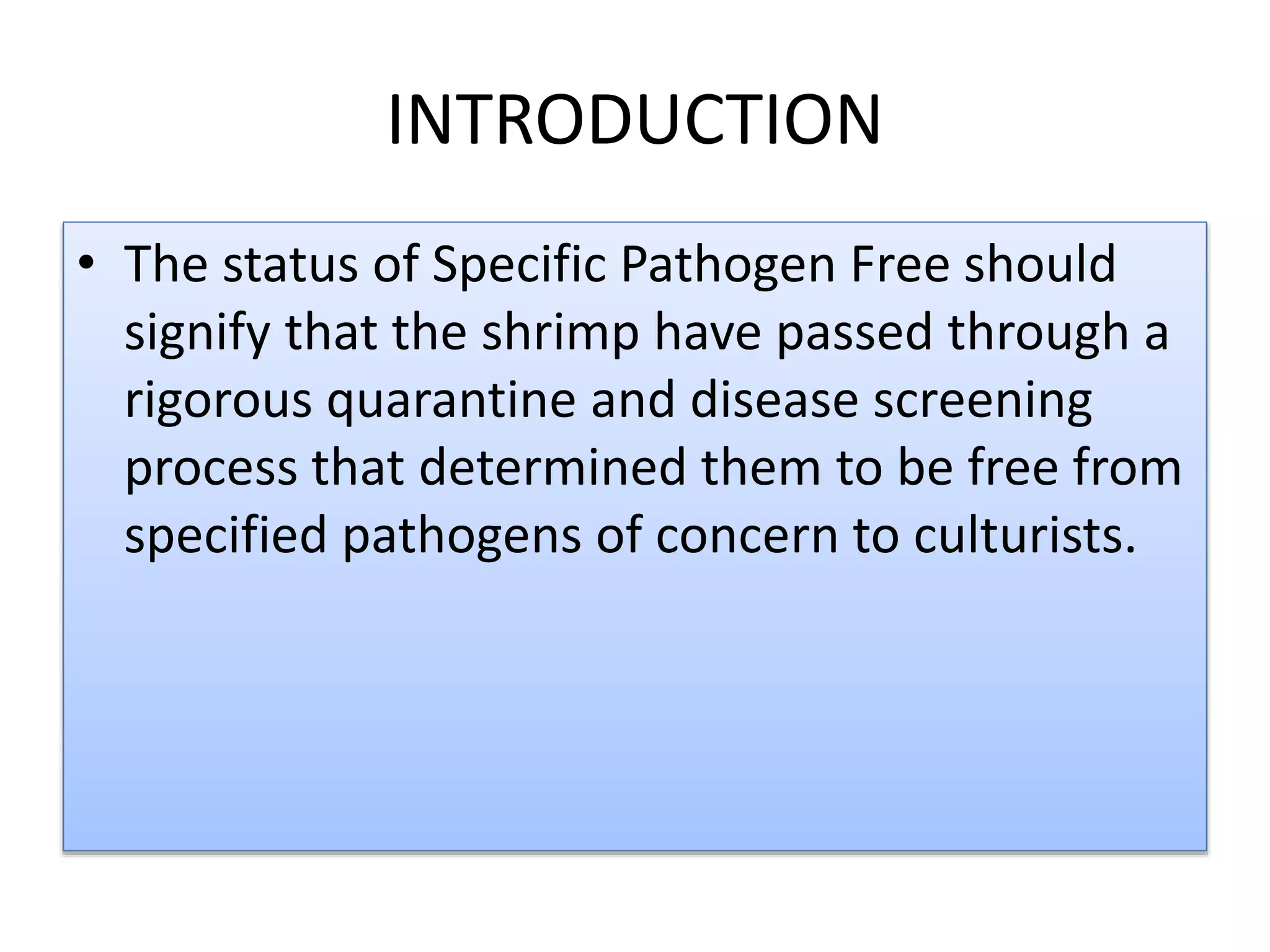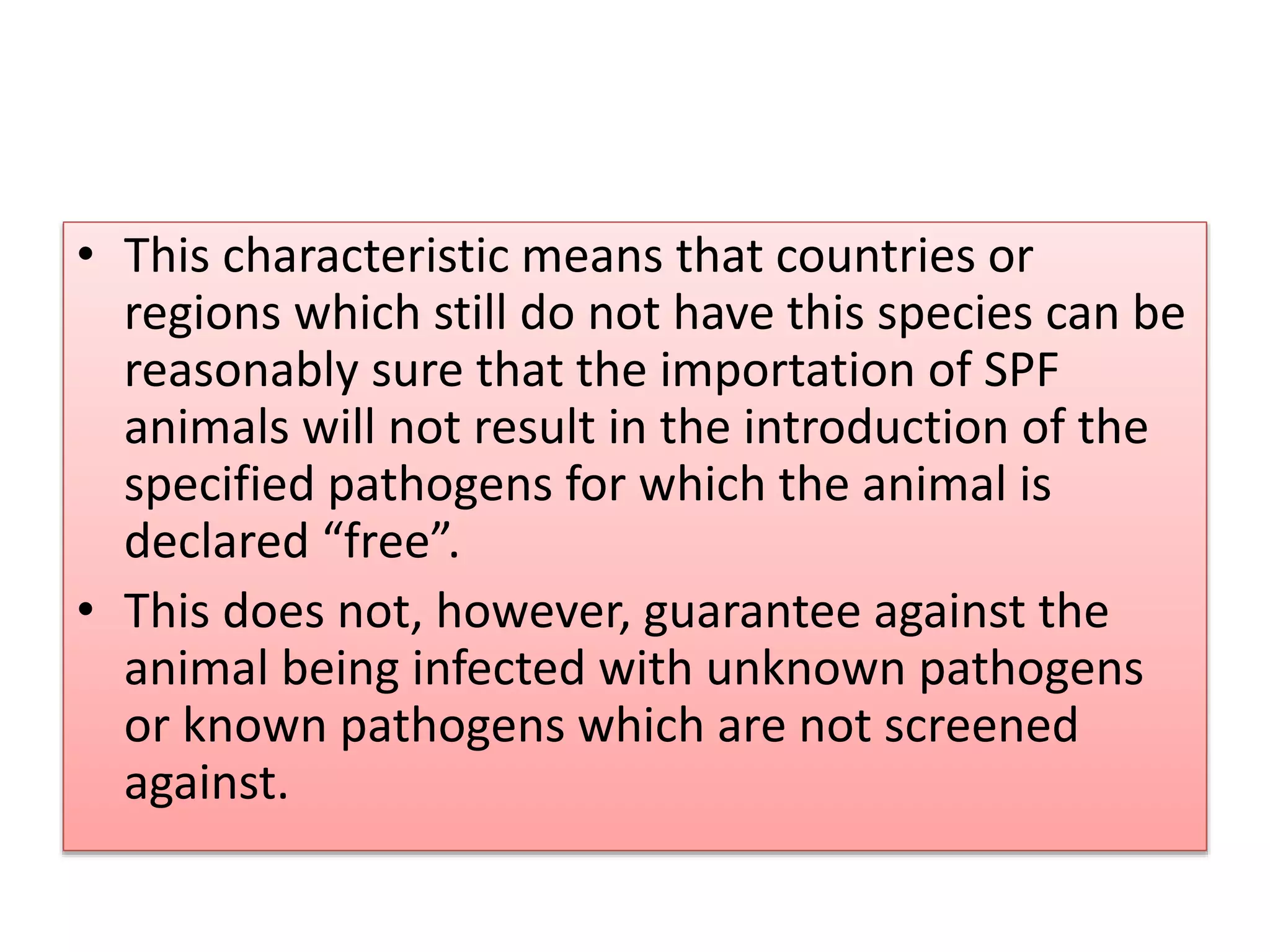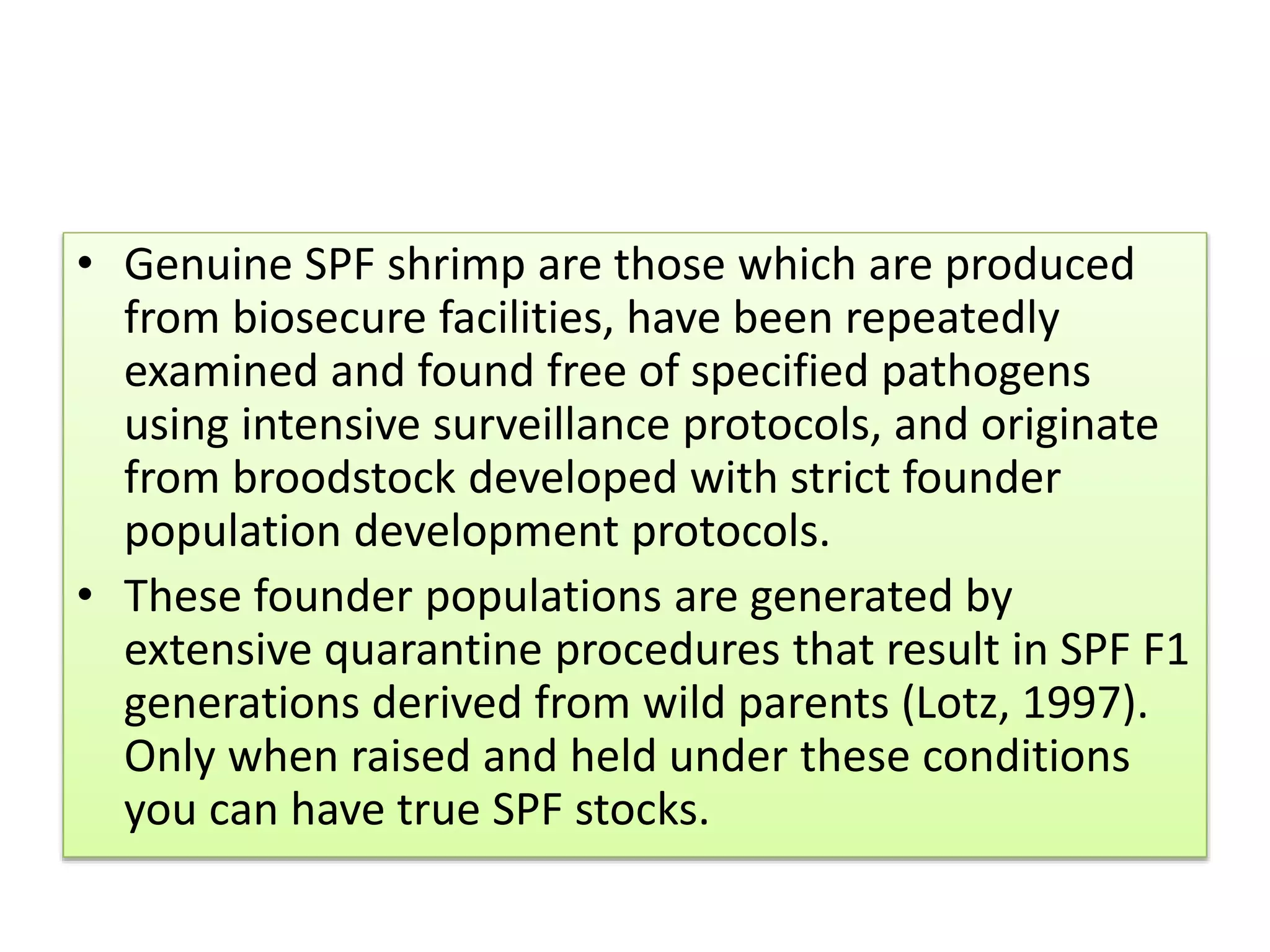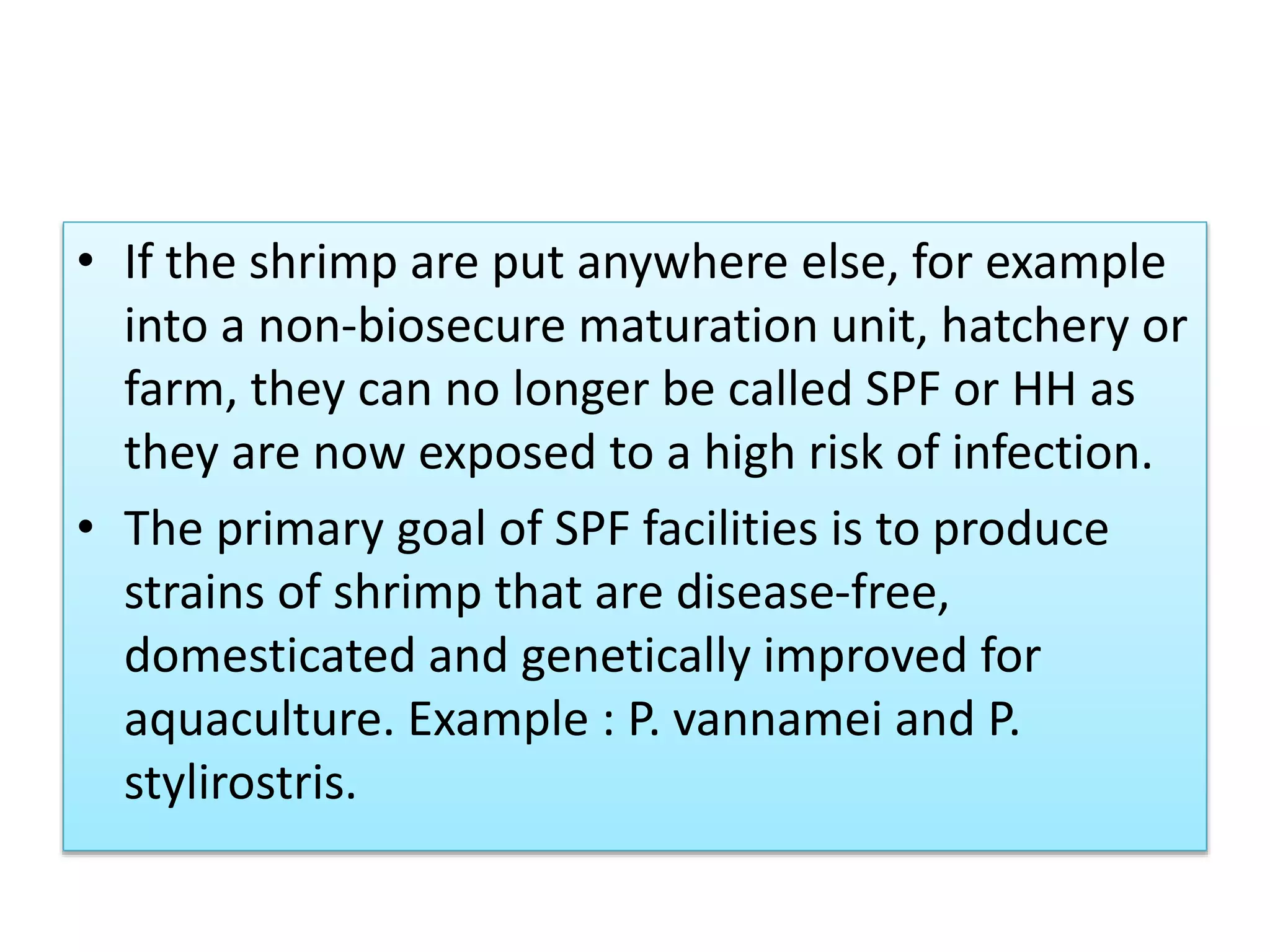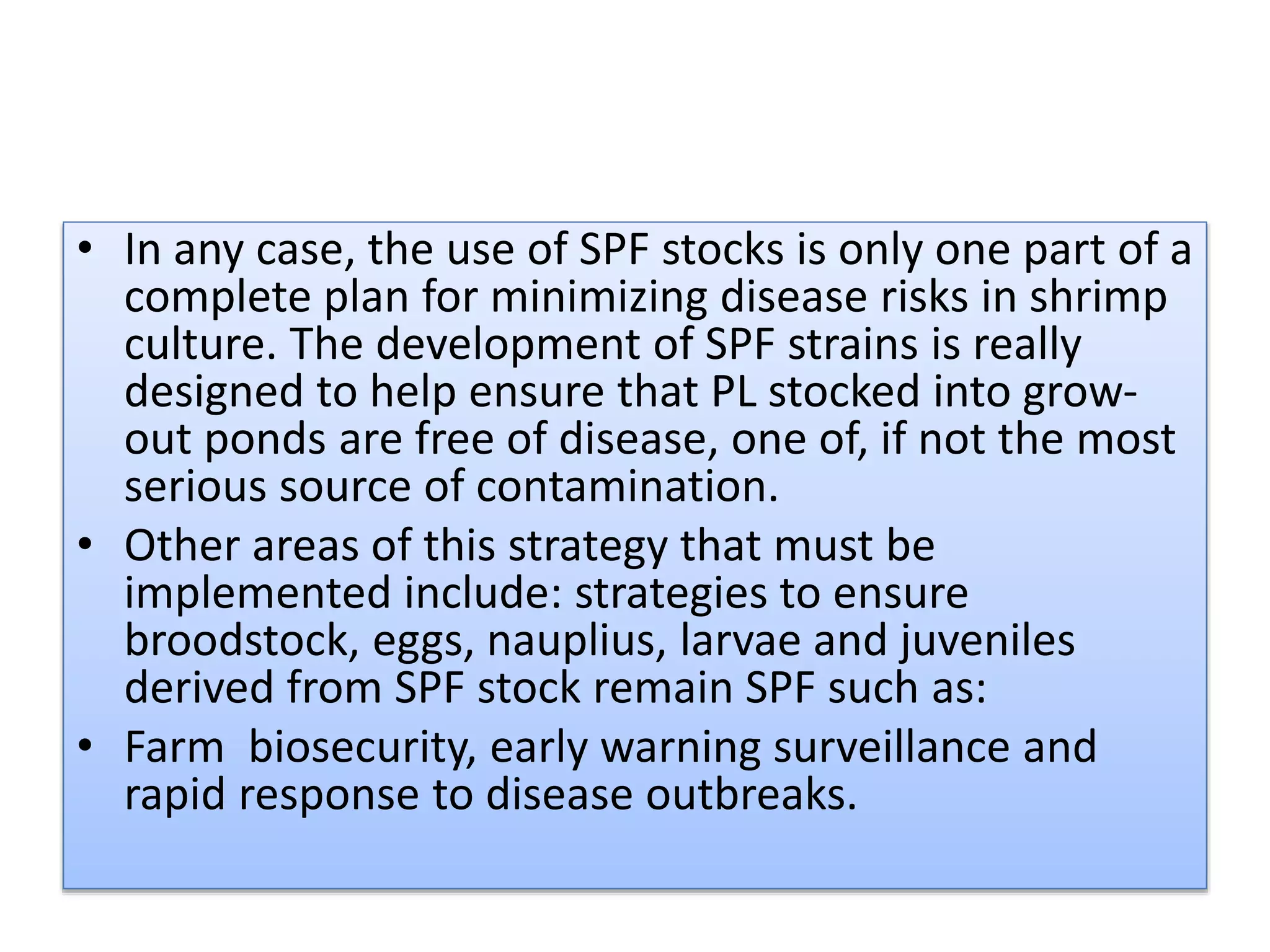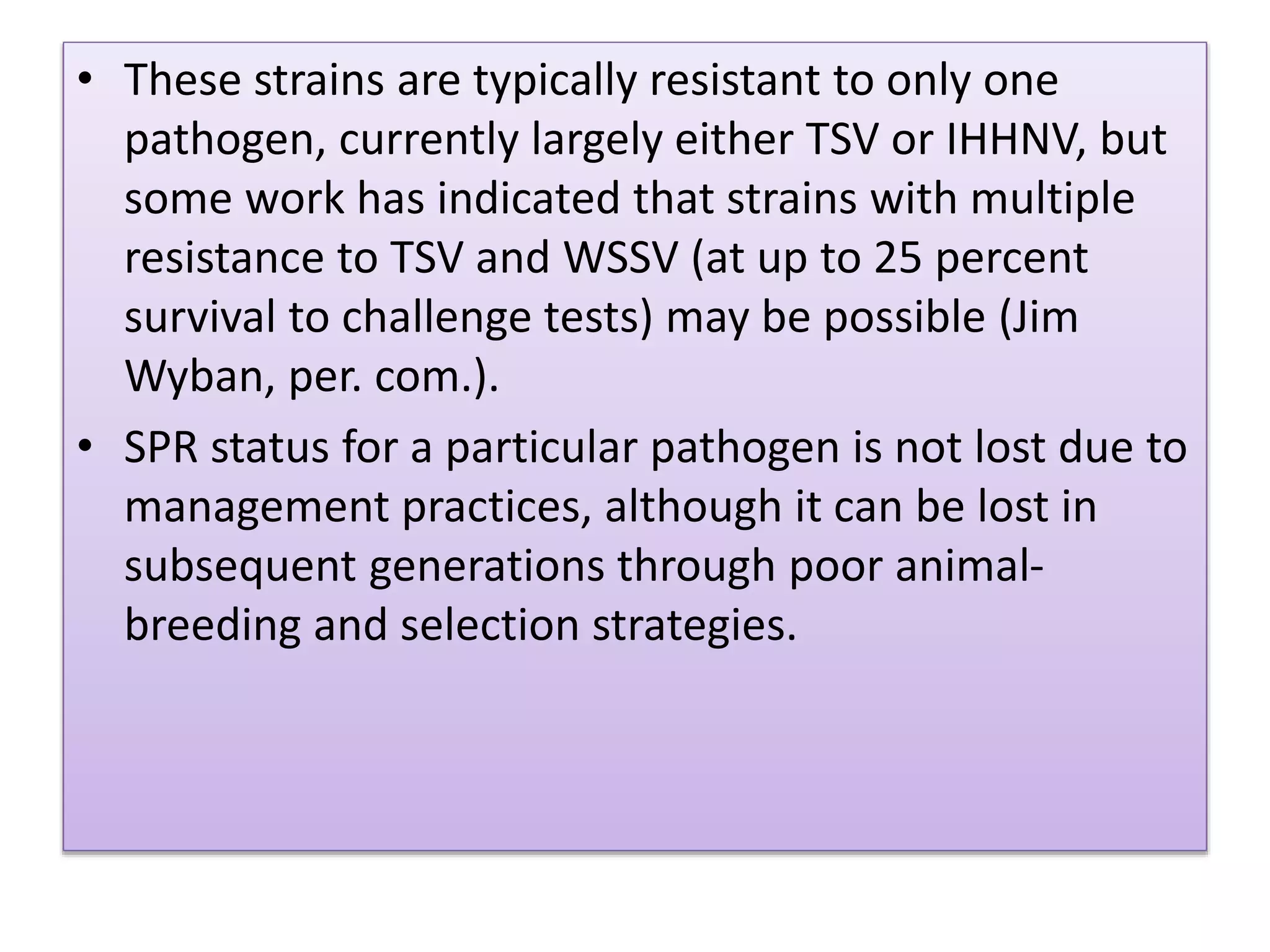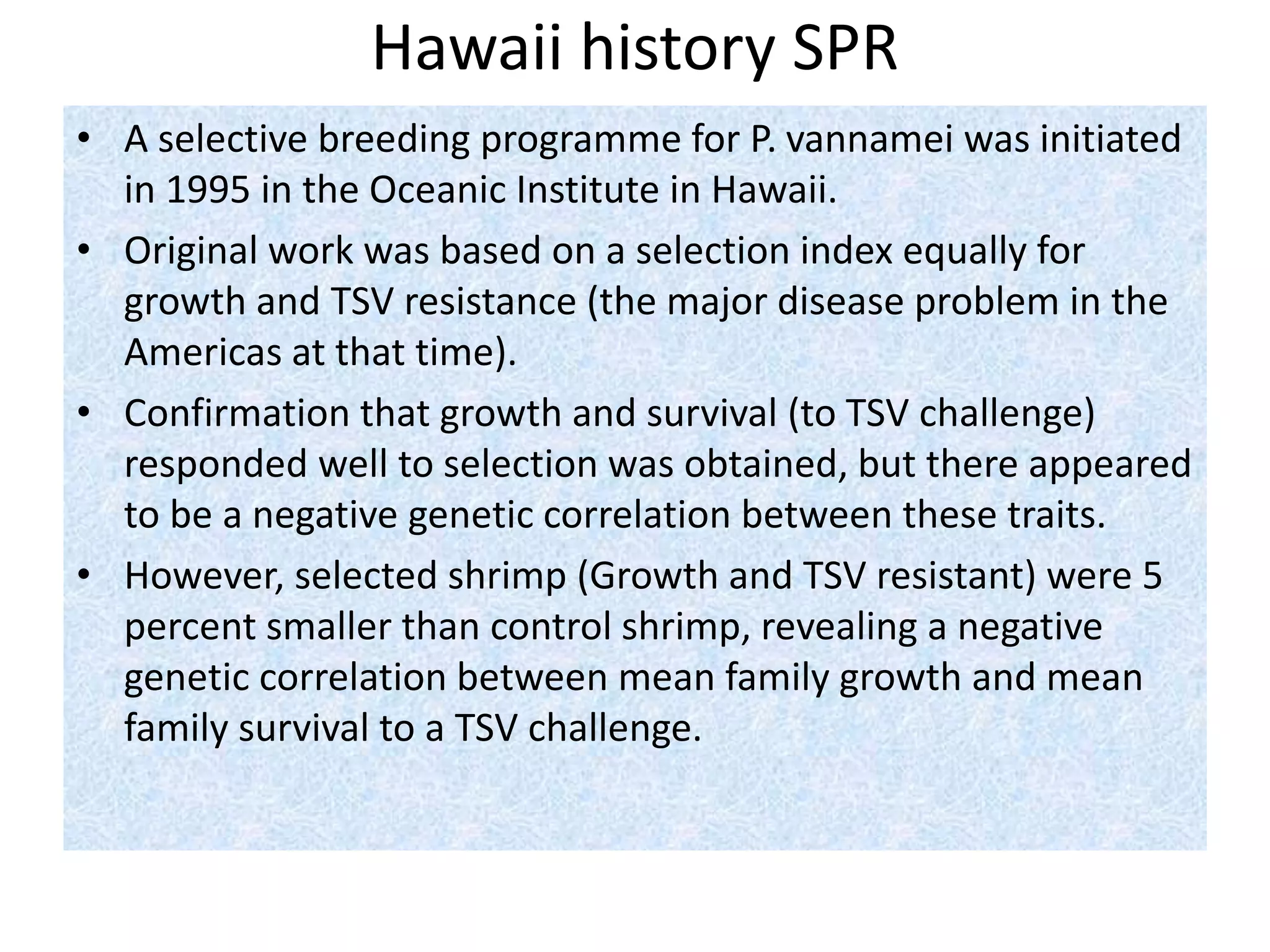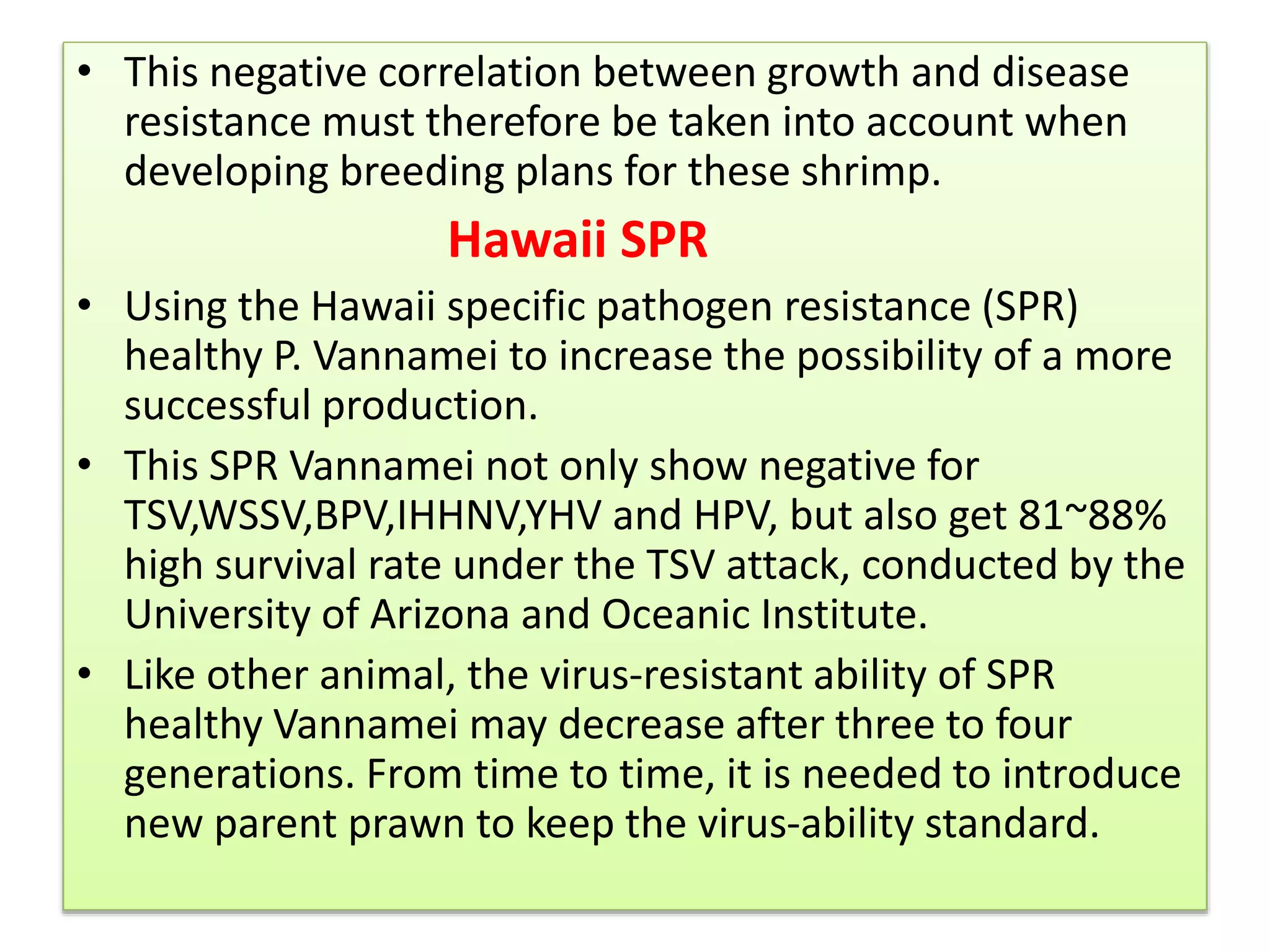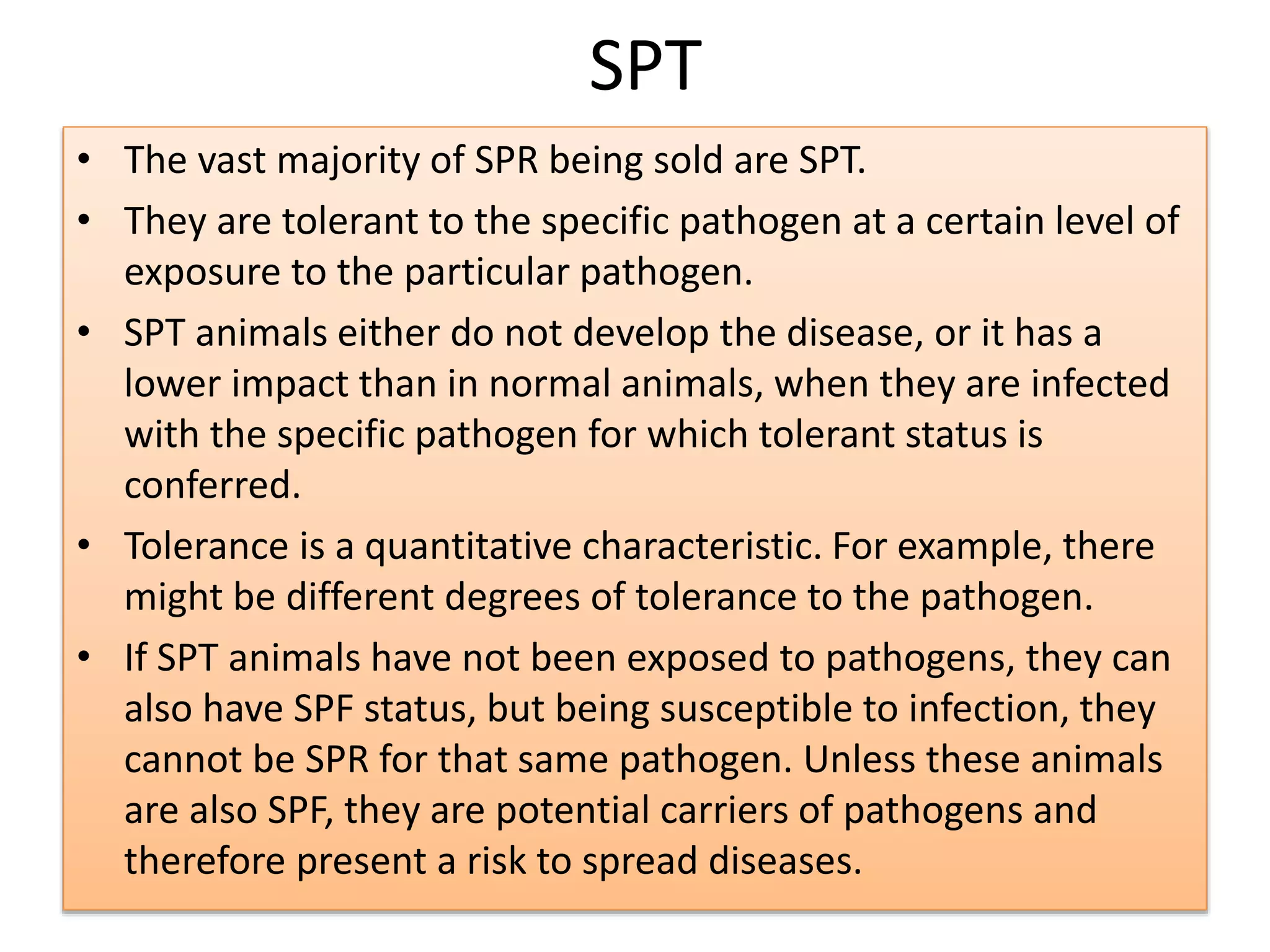1. SPF animals are free from specific pathogens but may still be susceptible to infection. SPR animals have been selectively bred for resistance to particular pathogens through challenge testing.
2. Non-SPF broodstock can introduce novel diseases and pass pathogens to offspring without strict biosecurity. They may not have been selectively bred.
3. True SPF status requires rigorous screening and production in biosecure facilities; outside these facilities animals may still be disease-free but are no longer considered SPF.


